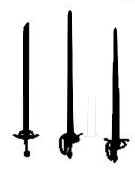I've been using a longbow and broadsword combo for awhile now, but I just found a really nice sword that I want to use. Only problem is I haven't been keeping offhands with me since I wasn't using them, so I have a stinky warhorn at the moment.
I'm wondering if I should look for a good torch or something else.
I'm wondering if I should look for a good torch or something else.







